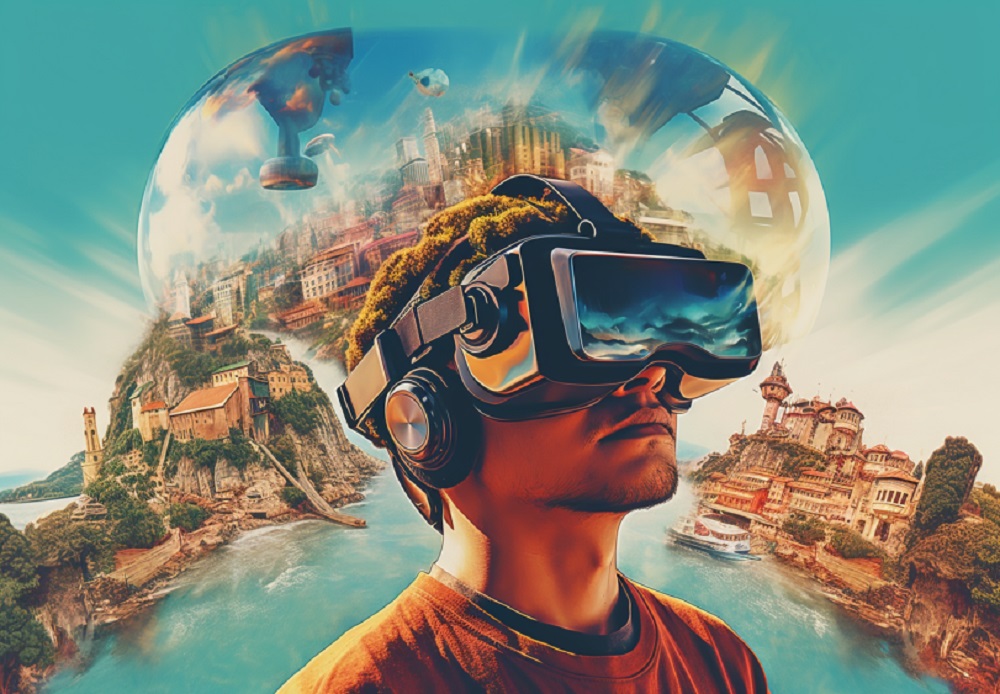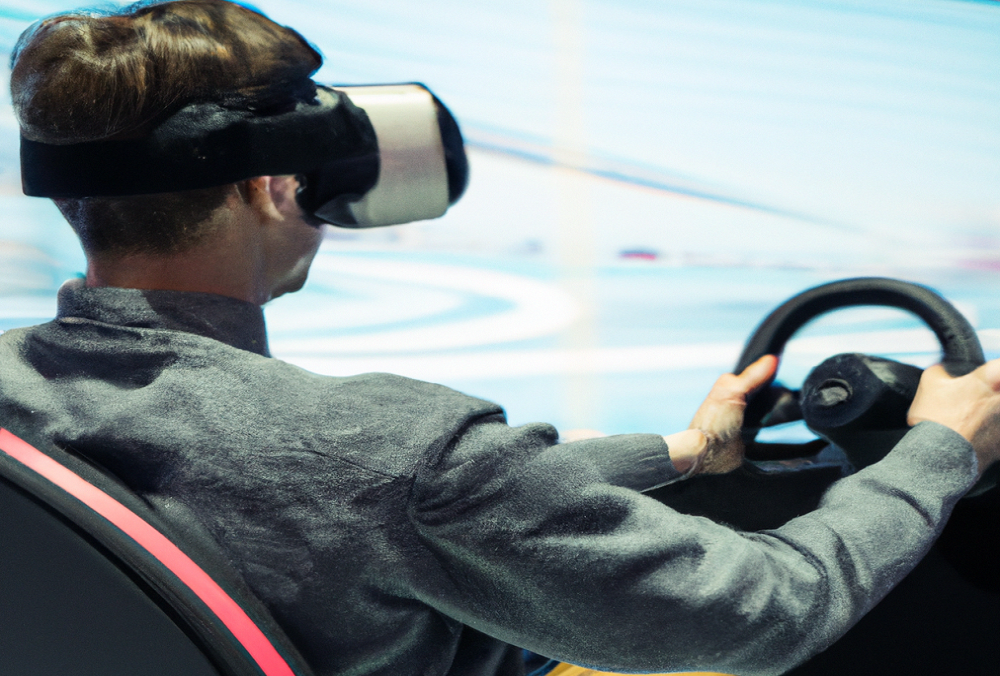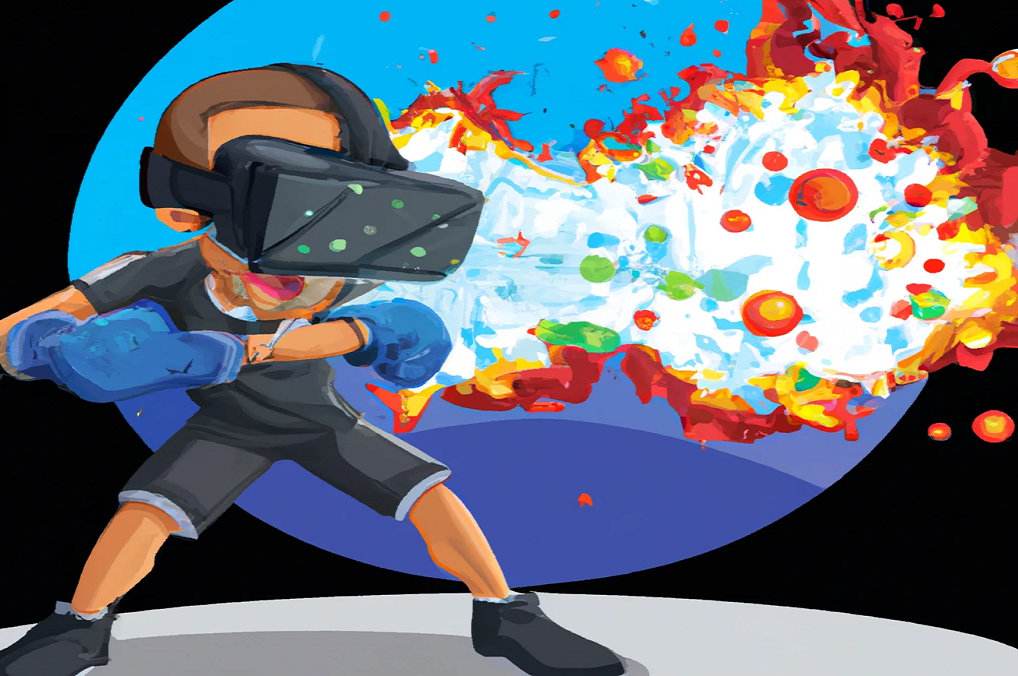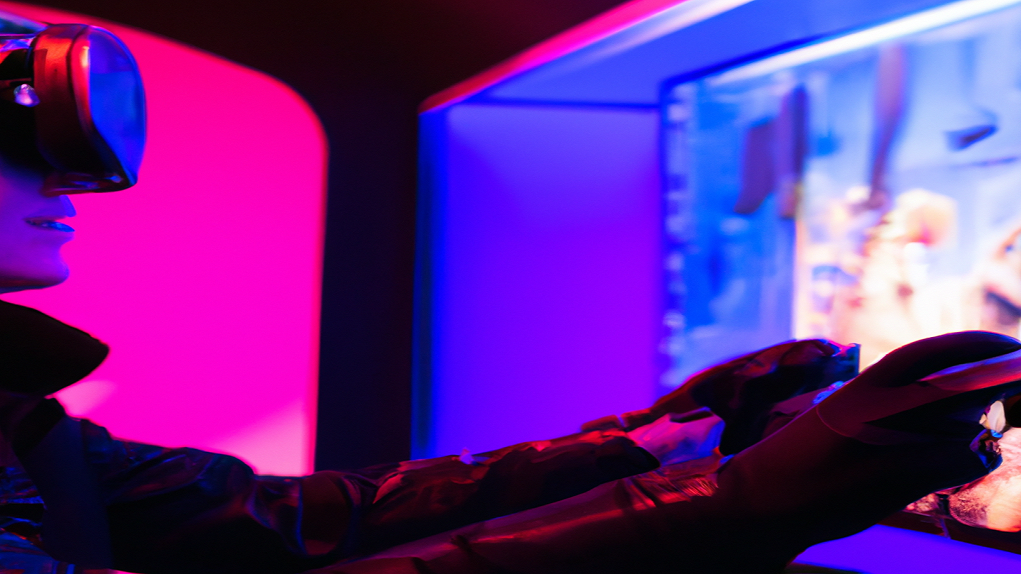A Comprehensive Comparison Between VR & AR
Introduction
Virtual Reality (VR) and Augmented Reality (AR) are two transformative technologies that have gained significant attention in recent years. While both offer immersive experiences, they differ in their fundamental approaches. This article provides a comprehensive comparison of VR and AR, exploring their underlying technologies, applications, advantages, limitations, and future prospects. By the end of this article, you will have a deep understanding of the similarities, differences, and potential convergence between VR and AR.
1. Defining Virtual Reality and Augmented Reality
Virtual Reality (VR) refers to the technology that creates a simulated digital environment, transporting users into a computer-generated world. By wearing a VR headset, users are immersed in a virtual space where they can interact with and explore their surroundings. VR often involves the use of specialized controllers or motion-tracking devices to enhance user engagement and interactivity.
Augmented Reality (AR), on the other hand, overlays virtual elements onto the real world, enhancing the user's perception and interaction with their physical environment. AR can be experienced through various devices such as smartphones, tablets, smart glasses, or heads-up displays. AR applications typically utilize sensors and cameras to detect and track the user's surroundings, enabling the seamless integration of virtual content into the real world.
2. Technological Differences
Underlying VR technology, the primary focus is to create a fully immersive, computer-generated environment that replaces the user's physical reality. This is achieved through high-resolution displays, motion tracking, and realistic 3D graphics. VR systems often require powerful computing devices to deliver a smooth and responsive experience, as well as dedicated headsets that completely block out the real world.
In contrast, AR technology blends virtual elements with the user's real-world environment. AR relies on computer vision, simultaneous localization and mapping (SLAM), and advanced tracking technologies to detect and understand the user's surroundings. The virtual content is then overlaid onto the real world, seamlessly integrating with the user's physical space. AR experiences are typically delivered through devices like smartphones, tablets, or AR glasses, which allow users to see the real world while also viewing virtual elements.
3. Immersion and Interaction
VR excels in creating a highly immersive experience by completely replacing the user's physical reality with a virtual environment. By wearing a VR headset, users can be transported to fantastical realms, explore simulated worlds, and interact with virtual objects in a lifelike manner. The level of immersion in VR is often enhanced through head and body tracking, spatial audio, and haptic feedback, providing users with a sense of presence and deep engagement.
In AR, the immersion level is lower since the user's physical reality remains intact, but augmented with virtual elements. AR allows users to view and interact with virtual objects or information overlaid onto their real-world surroundings. This interaction can range from simple gestures and touch-based controls on mobile devices to more advanced hand tracking or voice commands when using AR glasses. While AR doesn't offer the same level of complete immersion as VR, it provides a unique and contextual overlay that enhances the user's perception and understanding of their environment.
4. Applications in Entertainment and Gaming
Both VR and AR have made significant strides in the entertainment and gaming industries, transforming the way users engage with digital content. VR gaming provides an unparalleled level of immersion and presence, allowing players to step into virtual worlds, interact with characters, and experience thrilling adventures. VR gaming experiences often leverage the technology's capabilities for realistic graphics, spatial audio, and precise motion tracking, creating an unparalleled sense of immersion.
AR gaming, on the other hand, overlays virtual elements onto the real-world environment, introducing gameplay elements and challenges in the user's physical space. AR gaming can be experienced on mobile devices or specialized AR glasses, offering unique and interactive experiences. With AR, users can engage in location-based games, where virtual objects or characters are integrated into real-world settings. This blurring of boundaries between the virtual and physical worlds opens up new possibilities for dynamic and social gaming experiences. AR games encourage players to explore their surroundings, solve puzzles, and collaborate with others in shared augmented spaces.
5. Training and Simulation
One of the significant advantages of both VR and AR is their application in training and simulation across various industries. VR training allows users to practice skills and scenarios in a safe and controlled virtual environment. Industries such as aviation, healthcare, manufacturing, and military training have embraced VR for its ability to replicate real-life situations and provide hands-on practice without the associated risks. VR simulations can simulate emergency scenarios, surgical procedures, or complex machinery operations, enabling trainees to gain experience and enhance their skills in a realistic yet controlled setting.
AR, on the other hand, offers valuable benefits in fields where real-time information overlay is crucial. For example, AR can provide on-the-job guidance and support to workers by overlaying step-by-step instructions or contextual information onto their field of view. This aids in maintenance and repair tasks, assembly processes, and complex machinery operations. AR enhances efficiency, reduces errors, and allows workers to access relevant information without needing to consult manuals or reference materials.
6. Visualization and Design
VR and AR have revolutionized the fields of visualization and design, providing new tools and possibilities for architects, engineers, interior designers, and artists. VR enables immersive architectural walkthroughs, where clients can experience and navigate through virtual representations of buildings or spaces before construction. This helps in visualizing the final outcome, identifying design flaws, and making informed decisions. VR also allows designers to experiment with lighting, materials, and spatial arrangements in a virtual environment, saving time and costs in the design iteration process.
AR, on the other hand, offers the ability to overlay virtual models or design concepts onto physical spaces. This allows designers and architects to visualize and communicate their ideas in real-time, providing clients or stakeholders with a clear understanding of how a design will look and function in the intended environment. AR-based applications enable interactive and collaborative design reviews, where multiple users can view and manipulate virtual elements in the real world, fostering better communication and decision-making.
7. Healthcare and Medical Applications
Both VR and AR have made significant contributions to the healthcare industry, transforming patient care, medical training, and therapy. VR is used for immersive medical simulations, allowing medical students and professionals to practice surgical procedures or emergency scenarios in a realistic virtual environment. This enables skill development, decision-making, and teamwork without risks to actual patients. VR therapy is also gaining traction, offering immersive experiences for pain management, phobia treatment, and mental health interventions.
AR has found applications in medical education and clinical practice. By overlaying patient data and medical information onto the physician's field of view, AR enhances visualization during surgeries and other medical procedures. Surgeons can view patient vitals, anatomical structures, or guidance cues without needing to look away from the operating field. AR can also assist in medical training, providing real-time guidance and feedback to medical students during procedures.
8. Accessibility and Social Interaction
Accessibility is an important consideration in the development of VR and AR technologies. VR can provide unique experiences for individuals with physical disabilities or limitations, allowing them to participate in virtual environments and activities that may be difficult or impossible in the real world. VR can also offer new forms of social interaction for people who may be socially isolated or have difficulty engaging in traditional social settings. Virtual spaces and avatars can enable communication, collaboration, and shared experiences, fostering connections and a sense of presence among individuals.
AR, on the other hand, promotes accessibility by providing real-time information and context-specific assistance. For individuals with visual impairments, AR can offer auditory cues or haptic feedback to navigate their surroundings. AR can also enhance accessibility in public spaces by overlaying relevant information, such as directions, translations, or audio descriptions, onto the user's field of view. This promotes inclusivity and empowers individuals with diverse needs to navigate and engage with their environment more effectively.
AR and VR can also facilitate social interaction by creating shared virtual spaces where people can connect and collaborate regardless of their physical location. VR social platforms allow users to interact with each other through avatars, engage in virtual events, and participate in shared activities such as games or virtual concerts. This opens up new opportunities for socialization, networking, and community building. AR, on the other hand, enables real-time collaboration and communication by overlaying virtual elements onto the physical world. Users can share information, annotations, or virtual objects in a collaborative AR environment, enhancing teamwork and remote collaboration.
9. Advancements and Future Trends
The fields of VR and AR are rapidly evolving, driven by advancements in technology and the continuous exploration of new applications. Both technologies are becoming more accessible, with improved hardware, increased processing power, and better affordability. VR headsets are becoming more compact, wireless, and comfortable, while AR glasses are becoming lighter and more visually appealing. These advancements are paving the way for wider adoption and integration of VR and AR into various domains.
One notable trend is the convergence of VR and AR, known as Mixed Reality (MR). MR aims to combine the best aspects of both technologies, creating seamless experiences that blend virtual and real-world elements in a more integrated and natural way. MR seeks to overcome the limitations of isolation in VR and the limited field of view in AR, enabling users to interact with virtual content while maintaining awareness of their physical environment. This convergence opens up new possibilities for gaming, training, communication, and visualization.
Another significant advancement is the development of lightweight and untethered devices. As VR headsets and AR glasses become more compact and portable, they will offer greater convenience and mobility for users. This will enable the use of VR and AR in various contexts, such as outdoor activities, travel experiences, or on-the-go professional applications.
Furthermore, the integration of AI and machine learning algorithms is expected to enhance the capabilities of VR and AR systems. AI can enable more realistic virtual environments, intelligent object recognition in AR, adaptive content generation, and personalized experiences. These technologies can contribute to more immersive, interactive, and context-aware VR and AR applications.
10. Ethical Considerations
As VR and AR technologies continue to advance, it is essential to address the ethical considerations associated with their use. Privacy concerns arise when capturing and storing user data in VR or AR environments. It is crucial to establish clear guidelines and regulations to protect user privacy, especially when collecting sensitive information or capturing audiovisual data.
Another ethical consideration is related to the potential impact on mental health. Prolonged exposure to immersive VR experiences may lead to side effects such as cybersickness or disorientation. Developers and designers must prioritize user comfort and safety by implementing measures to mitigate these risks and providing user-friendly interfaces and settings.
Moreover, ethical concerns around content generation and dissemination arise in both VR and AR. Misinformation, fake experiences, or inappropriate content can have negative consequences on individuals and society. Responsible content curation, moderation, and user-driven feedback mechanisms should be implemented to ensure the ethical use of VR and AR technologies.
Conclusion
Virtual Reality (VR) and Augmented Reality (AR) offer unique and transformative experiences that have the potential to revolutionize various industries and domains. While VR immerses users in virtual environments, AR overlays virtual elements onto the real world. Both technologies have their distinct advantages, applications, and limitations. However, the lines between VR and AR are blurring with the emergence of Mixed Reality (MR) and the convergence of these technologies. The future holds immense potential for the intersection of VR and AR, opening up new possibilities and creating more seamless and integrated experiences.
As VR and AR continue to evolve, advancements in technology, such as improved hardware, increased processing power, and AI integration, will drive their development further. VR and AR devices will become more accessible, lightweight, and portable, allowing for greater mobility and usage in various contexts. The convergence of VR and AR into MR will enable users to interact with virtual content while maintaining awareness of their physical environment, enhancing the realism and usability of these technologies.
However, along with the advancements, it is crucial to address the ethical implications associated with VR and AR. Privacy concerns, such as data collection and storage, must be carefully managed to ensure the protection of user information. Additionally, attention should be given to potential mental health impacts, ensuring that VR and AR experiences are designed to prioritize user comfort and safety.
Responsible content curation and moderation are paramount to prevent the dissemination of misinformation, fake experiences, or inappropriate content. It is essential for developers, designers, and regulators to establish guidelines and regulations to govern the ethical use of VR and AR technologies, fostering a safe and beneficial environment for users and society as a whole.
In conclusion, the intersection of Virtual Reality and Augmented Reality represents a fascinating frontier in technology. By understanding the similarities, differences, and potential convergence of these technologies, we can navigate the boundaries and make informed decisions about their applications and impact. VR and AR have the potential to transform various industries, revolutionize the way we interact with digital content, and shape the future of human-computer interaction. As we move forward, it is crucial to embrace the advancements, address the challenges, and harness the opportunities presented by the fusion of VR and AR.






